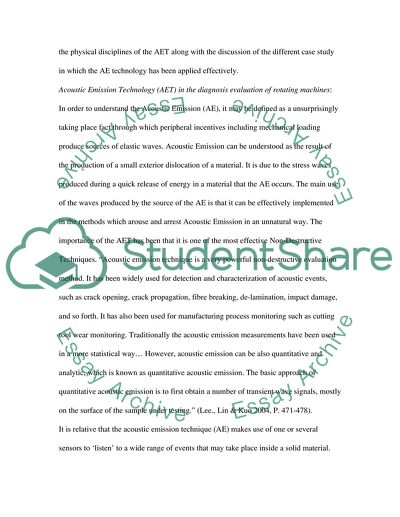Cite this document
(Acoustic Emission as a powerful Non- Destructive Technique (NDT) for Article, n.d.)
Acoustic Emission as a powerful Non- Destructive Technique (NDT) for Article. Retrieved from https://studentshare.org/engineering-and-construction/1715326-acoustic-emission-as-a-powerful-none-destructive-technique-ndt-for-applying-diagnosis-evaluation-of-rotating-machines
Acoustic Emission as a powerful Non- Destructive Technique (NDT) for Article. Retrieved from https://studentshare.org/engineering-and-construction/1715326-acoustic-emission-as-a-powerful-none-destructive-technique-ndt-for-applying-diagnosis-evaluation-of-rotating-machines
(Acoustic Emission As a Powerful Non- Destructive Technique (NDT) for Article)
Acoustic Emission As a Powerful Non- Destructive Technique (NDT) for Article. https://studentshare.org/engineering-and-construction/1715326-acoustic-emission-as-a-powerful-none-destructive-technique-ndt-for-applying-diagnosis-evaluation-of-rotating-machines.
Acoustic Emission As a Powerful Non- Destructive Technique (NDT) for Article. https://studentshare.org/engineering-and-construction/1715326-acoustic-emission-as-a-powerful-none-destructive-technique-ndt-for-applying-diagnosis-evaluation-of-rotating-machines.
“Acoustic Emission As a Powerful Non- Destructive Technique (NDT) for Article”, n.d. https://studentshare.org/engineering-and-construction/1715326-acoustic-emission-as-a-powerful-none-destructive-technique-ndt-for-applying-diagnosis-evaluation-of-rotating-machines.


